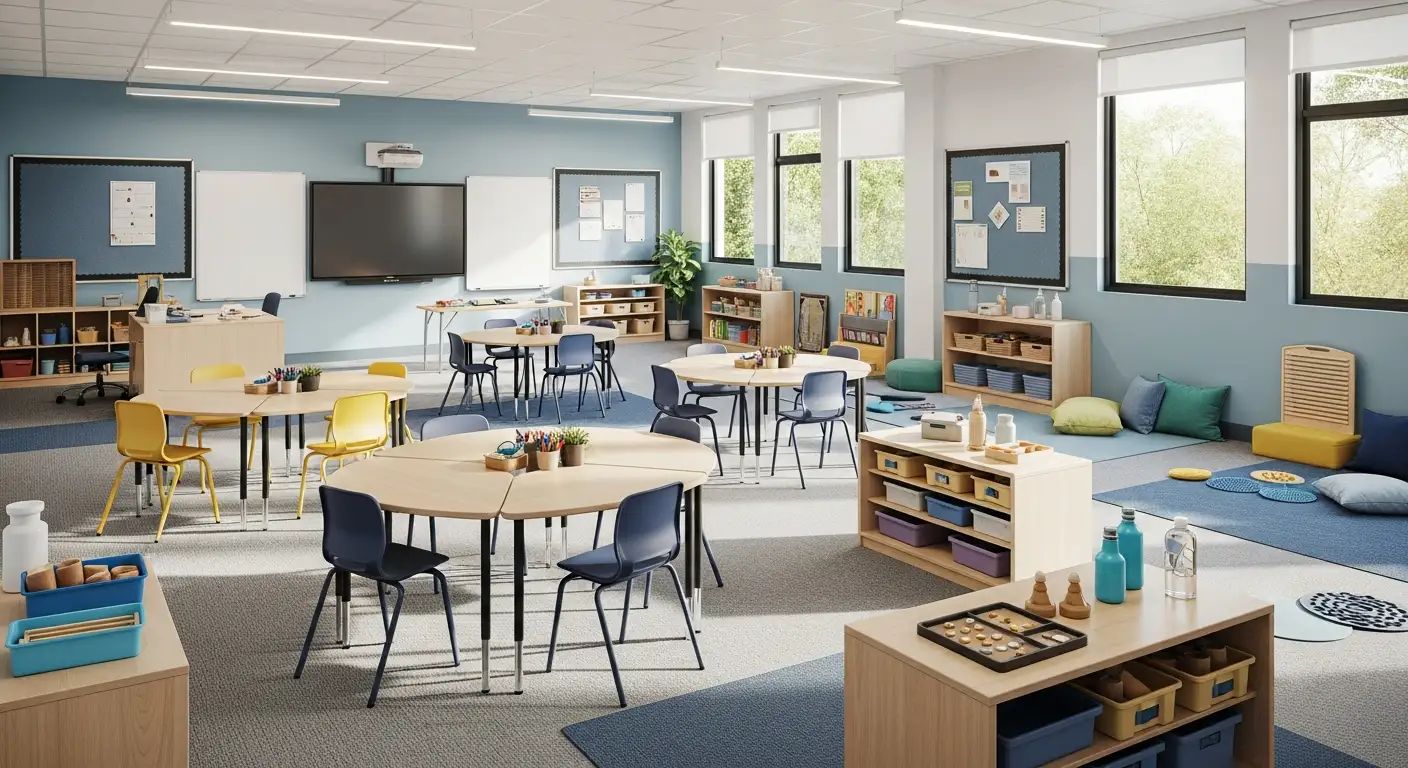Fostering a Unified Family Approach to ABA Therapy
Involving extended family members in ABA therapy is essential to creating a consistent, supportive environment that enhances a child's progress. This article explores practical strategies for engaging family members, the vital role they play, available resources for support, and best practices to ensure cohesive involvement across all generations.
Understanding the Role of Extended Family in ABA Support

What is the role of extended family members in supporting autism therapy?
Extended family members, including grandparents and close relatives, hold a significant place in supporting autism therapy. Their involvement enriches the child's developmental journey by providing emotional comfort, practical assistance, and social engagement. These family members can help reinforce behavioral strategies outside formal therapy sessions, contributing to consistency across various environments.
By understanding autism and the child's unique needs, extended family can actively participate in daily routines that promote social and communication skills. They might assist with implementing strategies such as social stories or visual supports, helping the child generalize learned behaviors across different settings. Their support reduces stress for parents and creates a nurturing, inclusive atmosphere conducive to growth.
Furthermore, extended family members often help with day-to-day activities, offer respite care, and advocate within the community, thereby expanding the child's support network. This collective effort assures that therapy gains are sustained beyond therapy sessions, fostering better outcomes and empowering families.
How can therapists facilitate collaboration with extended family members during ABA therapy?
Therapists play a crucial role in fostering collaboration with extended family members. They achieve this by maintaining open communication, sharing progress updates, and involving family members in setting goals. Providing targeted parent training, workshops, and educational resources equips relatives with the necessary ABA strategies and knowledge.
Building trust and respect through regular meetings and transparent dialogue encourages active participation and shared responsibility. Therapists might also help create structured routines and visual supports at home, making it easier for family members to support positive behaviors.
By respecting cultural values and individual family dynamics, therapists can develop a collaborative relationship that enhances the effectiveness of therapy. When extended family is involved as part of the team, the child benefits from a consistent, supportive environment that promotes sustained progress.
| Aspect | Role | Details |
|---|---|---|
| Emotional support | Provides comfort and reduces stress | Helps foster a nurturing environment |
| Learning & training | Gains knowledge on ABA techniques | Attends workshops and educative sessions |
| Day-to-day routines | Implements strategies | Uses visual supports, routines, positive reinforcement |
| Advocacy | Represents child's needs in community | Supports access to services and fights stigma |
| Active participation | Engages in therapy sessions | Observes, supports, and reinforces behavioral strategies |
Effective involvement of extended family creates a more inclusive, understanding, and supportive environment that significantly benefits the child's development.
Strategies to Promote Family Involvement in ABA Therapy

What are effective strategies for involving extended family members in ABA therapy?
Involving extended family members in ABA therapy is crucial for creating a consistent and supportive environment for the child. One effective approach is providing comprehensive training that educates extended family members about ABA principles and specific strategies. This training helps them understand their role and how to reinforce behaviors.
Active participation is encouraged through collaborative goal-setting, where families share their insights and preferences. Therapists often model techniques during sessions and offer hands-on coaching, allowing family members to practice implementing strategies in real-time.
Using visual supports, such as social stories, visual schedules, and clear routines, can improve understanding and engagement. These tools make it easier for all family members to follow through consistently.
Creating opportunities for open communication and offering ongoing support helps address challenges, reduces parental and family stress, and fosters stronger emotional bonds. Providing workshops, resources, and flexible training sessions empower extended family members to reinforce skills confidently and support the generalization of behaviors across various settings.
What are best practices for engaging extended family members in supporting a child's ABA therapy?
Best practices include educating them thoroughly on ABA concepts and effective strategies so they feel confident in their role. Engaging families in goal-setting and regular progress discussions helps foster a sense of collaboration and shared responsibility.
Offering targeted training sessions, either in person or online, provides practical skills and increases their comfort level. Creating an inclusive environment that encourages participation and celebrates small successes motivates extended family members.
Practicing empathy and addressing any concerns openly build trust and demonstrate respect for their perspectives. Recognizing their efforts and providing positive feedback reinforce their commitment.
Ultimately, creating a strong partnership between therapists and families, grounded in mutual respect and open dialogue, promotes sustained engagement and enhances the child's progress.
How can therapists facilitate collaboration with extended family members during ABA therapy?
Therapists can promote collaboration by maintaining open and ongoing communication with all family members. Involving them in goal planning, therapy updates, and decision-making processes fosters transparency and shared ownership.
Providing tailored parent and family training enhances understanding and skill implementation at home. These sessions can include demonstrations, role-playing, and resource sharing.
Building a relationship rooted in trust and mutual respect encourages family members to participate actively. Regular meetings, respecting cultural values, and addressing individual family needs are essential components.
Creating a structured environment at home—with visual supports and routines—supports the consistent application of strategies across settings. This makes it easier for families to reinforce behaviors effectively.
Fostering teamwork between therapists and families ensures that interventions are cohesive and tailored, thereby improving the child's overall progress and skill generalization.
Resources Supporting Family Engagement in ABA Therapy
 Families play an essential role in the success of ABA therapy by actively participating and supporting their child's progress. To empower parents and caregivers, numerous resources are available that facilitate understanding and effective involvement.
Families play an essential role in the success of ABA therapy by actively participating and supporting their child's progress. To empower parents and caregivers, numerous resources are available that facilitate understanding and effective involvement.
Educational materials such as books, guides, and online articles provide foundational knowledge about ABA principles and strategies. These resources help parents grasp how behavioral interventions work and how to apply them at home.
Participation in training programs, workshops, and seminars is highly beneficial. These organized sessions teach practical skills like positive reinforcement, behavior management, and skill generalization, equipping families with tools to support learning across different environments.
Parents can also access online courses designed specifically for family members. These courses often include videos, exercises, and Q&A sessions that clarify ABA techniques and address common challenges.
Support networks, including parent groups, online forums, and community organizations, offer emotional encouragement and shared experiences. Connecting with other families helps normalize challenges, exchange tips, and foster a sense of community.
Professional guidance from ABA therapists is crucial. Therapists often provide individualized consultations, participate in family meetings, and demonstrate behavioral strategies during sessions. This collaboration encourages consistent implementation of techniques outside therapy hours.
Furthermore, assessment tools like behavior tracking apps and printable observation charts enable parents to monitor progress reliably. These tools support data collection, which informs therapy adjustments and goal setting.
To find suitable resources, a search using phrases like "Resources for family participation in ABA" can lead to websites, local organizations, and online platforms offering valuable materials and support.
Overall, by utilizing these diverse resources, families can create a supportive home environment that reinforces therapy goals, promotes skill generalization, and fosters a positive, inclusive atmosphere for their child’s growth.
Creating a Supportive Environment for ABA Support and Generalization

How can extended family help by creating a supportive environment in the home?
Creating a supportive environment at home involves extended family members actively participating in establishing structured routines, routines, and visual supports that reinforce ABA learning. Setting predictable schedules and clear expectations helps the child feel safe and understand what to expect, which can reduce anxiety and foster positive behaviors.
Modifying the home environment to include visual supports, social stories, and accessible learning materials encourages independence and skill development. Extended family members can reinforce positive behaviors by using praise, rewards, and consistent responses, creating a cohesive and nurturing setting.
Incorporating all family members into daily routines not only supports skill generalization but also ensures continuous reinforcement of therapy goals. This collective effort strengthens the child's learning environment and promotes overall well-being.
What are the benefits of family involvement in ABA therapy?
Family participation in ABA therapy provides numerous advantages. It enhances communication skills and supports the generalization of learned behaviors across various settings such as home, school, and community.
When parents and relatives collaborate with therapists through training and open communication, children often progress faster in acquiring new skills and reducing challenging behaviors. Family involvement also improves daily routines and creates a stable environment, reducing stress for everyone involved.
Moreover, active participation strengthens sibling relationships, fosters family cohesion, and boosts parental confidence in managing behaviors. Overall, engaging families optimizes therapy outcomes and ensures that children benefit from consistent support in all aspects of their lives.
| Aspect | Benefits | Details |
|---|---|---|
| Consistency | Reinforces learning | Consistent routines and responses at home and in therapy support skill generalization |
| Emotional Support | Motivation & engagement | Emotional encouragement increases motivation and sustained engagement |
| Skill Generalization | Flexibility & Independence | Practice across settings promotes independence and social adaptability |
| Family Dynamics | Reduced stress & improved bonds | Participating together fosters stronger family relationships |
Harnessing the collective effort of families enhances the effectiveness of ABA therapy, ensuring lasting improvements in the child's development.
Empowering Families for Long-Term Success in ABA Therapy
Involving extended family members in ABA therapy requires intentional effort, ongoing education, and open communication. By providing resources, fostering collaboration, and creating an inclusive environment, families can significantly enhance the child's learning and generalization across various settings. Building a strong, supportive family network not only benefits the child's development but also boosts family resilience and cohesion, paving the way for sustained success in autism therapy.
References
- The Role of Family in ABA Therapy: Tips for Parents
- Part 9: Importance of Family Involvement in ABA Therapy
- Understanding Family Autism and Applied Behavior Analysis (ABA)
- Parent Involvement in ABA Therapy - The Autism Clinic at HOPE
- Helping Extended Family Understand Your Child's Unique Needs
- Path to Progress: ABA Therapy Strategies for Committed Parents
- Parental Involvement in ABA Therapy for Children with Autism
- Supporting Families with ABA Therapy
- Applied Behavior Analysis (ABA) | Autism Speaks
- The Role of Caregiver Involvement in ABA Therapy



